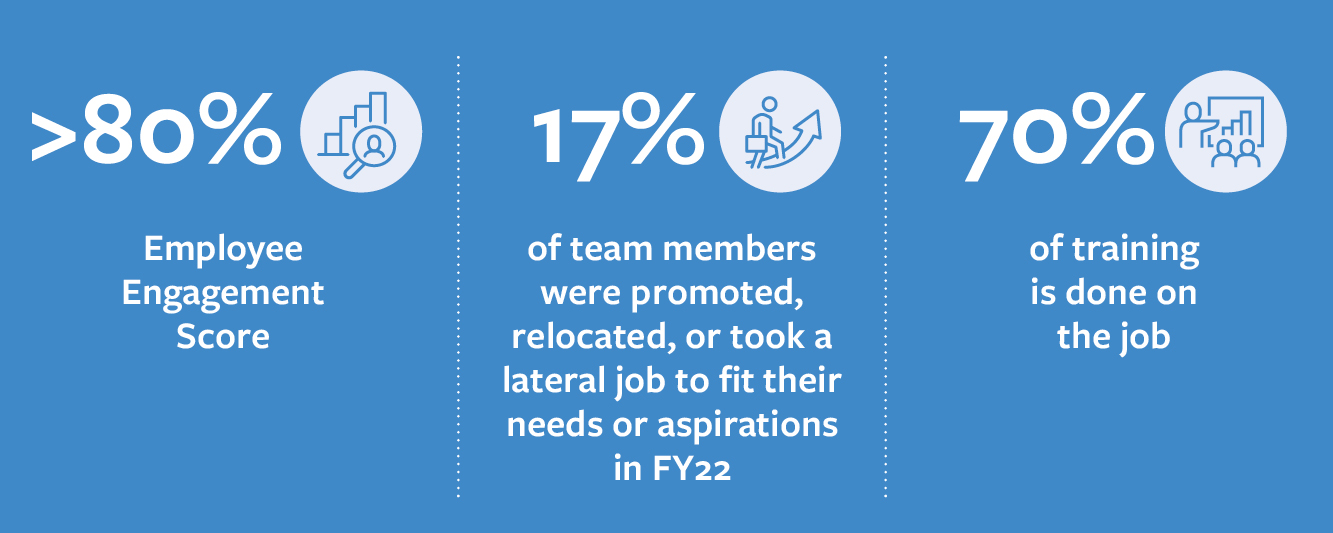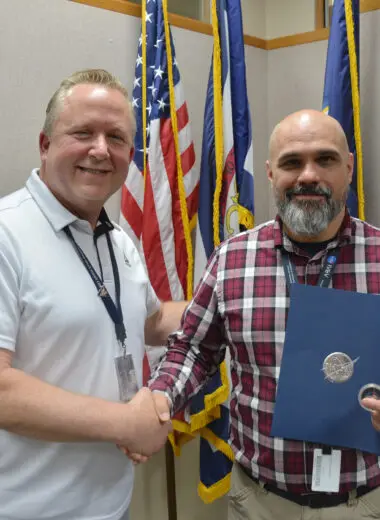Pivoting our Development Strategy to Recruit and Retain Millennials

By Shannon Watkins, Senior Director of Human Resources, Compass Group
Codi Nelson, an emerging young talent within our organization, had strong ties and roots in his current community and could not relocate for a new role. By creating a new promotional role that added great business value to our organization and allowed Codi to stay close to family and community, we created a win for both the business and Codi. Codi was promoted and now leads our new Apprenticeship Program, which helps to fill our pipeline with young talent that can grow within our Healthcare Technology Solutions (HTS) division. This position met the business and Codi’s needs while keeping him on a rising career track.
Codi and other millennials generally have career expectations that differ from previous generations. They desire interesting assignments and project work, flexible work conditions, and are vocal about career progression. They need to see a clear career path to consider a future with the company without disrupting their personal lives. Requiring a significant personal sacrifice to continue your career growth is no longer a successful mindset for our leaders to have when developing our millennial team members.
To accomplish those needs, our HR team is adapting as well. During the past year, approximately 17 percent of our HTS team members have been promoted, relocated, or taken a lateral job to fit their needs and career aspirations. This flexible new approach allows us to recruit and attract talented biomedical technicians, imaging engineers, and leaders with competing career options more effectively.
We are adapting to Make Promotions Happen Faster. To make this happen, we are training our on-site and regional leaders to identify the next roles for our people more quickly. For example, after a new team member is on the job for six months, a manager should be able to identify the scale of growth potential for the team member. Once that occurs, we can intentionally plot a path forward, involving the team member, so there is an investment on both sides.
We also continue to use other traditional ways to find the right jobs for talented people, such as Talent Reviews and Annual Performance Reviews. Using both the evaluation(s) and the employee skills, we work to place people in roles that will soon be open or will be created through organizational growth. For those needing 1-2 years of additional training before a promotion, a Development Plan is put into place to prepare them for the next step.
To ensure success with those Development Plans, we have specific training programs that will meet them in their current role, identify any gaps in skills or competencies, and provide training to fill those gaps in preparation for advancement. This individual approach gives associates the attention needed to continue to build their skills and offers more significant opportunities for their next role.
Eddie Myers, HTS’s Director of Cybersecurity, took this path. After working in a different department within the HTS division, we discovered his passion and expertise in cybersecurity. Eddie moved to a management role, expanding cybersecurity’s role in our organization. Eddie now leads our critical department of Cybersecurity Analysts. This is an example of another win-win for both Eddie and our organization.
Meeting the Needs of Creative Problem Solvers. Our training and development approach also accounts for the unique needs of people with technical skills. We realize technicians and clinical engineers who work on a wide variety of medical equipment think differently! They want to learn about the inner workings of MRIs, CT Scanners, and other imaging equipment. Our engineers need to work on several different projects in a hands-on manner, where they are engaged and can put their knowledge and curiosity to practical use.
We’ve revised our training programs to accommodate these needs. Approximately 70 percent of our training is done on the job. This approach enables them to shadow and learn from talented clinical and imaging service engineers while undertaking new assignments and projects that stretch their abilities. Another 20 percent of the training involves working with mentors, and only 10 percent of our training takes place in formal (virtual or live) classrooms.
We haven’t eliminated our historical approach – we have only expanded our approach and increased the flexibility of how we view promotions. A person willing to relocate to a new city or region can move into their next job more quickly than those who aren’t, purely based on opportunity. Taking on new responsibilities will broaden their skills and prepare them for more complex jobs in the future.
We have also pivoted on our remote work approach. With the pandemic, we saw roles in our organization that could be successful in a remote capacity. To increase the net of recruiting with geography, as well as retain our team members, we have kept those roles remote. People working in our Technical Resource Group, Procurement, Projects, Cybersecurity, and Regional Coordinators continue to work remotely. In addition, we’ve taken our traditional office space and have turned it into a collaborative innovation space that will accommodate extensive training, team meetings, drop-in cubicles, office space, and a place for the team to network and brainstorm.
Finally, our Interactive Career Planning Tool helps all team members learn about different management and leadership roles within our HTS division. Anyone can learn about different roles and their requirements through job descriptions and video content. It also includes recommended training relevant to each position, which can assist in building out the intentional Development Plan. Our managers also leverage this tool to facilitate more robust career development conversations with their team members.
By creating an environment that recognizes and welcomes the next generation of healthcare technology management professionals, they will see a future with broad opportunities without sacrificing their personal life. It’s an approach that will provide millennials with a fulfilling career while making our company better able to serve hospitals and their patients.
Related Posts
Let’s Talk About the Right Solution for Your Organization
Get in touch to discuss how Crothall Healthcare’s services and solutions can help your healthcare organization exceed its goals. You’ll learn more about:
- The transparency we bring to outsourced support services
- How we design customized solutions for your unique needs
- The technology and innovation Crothall delivers across all our services






